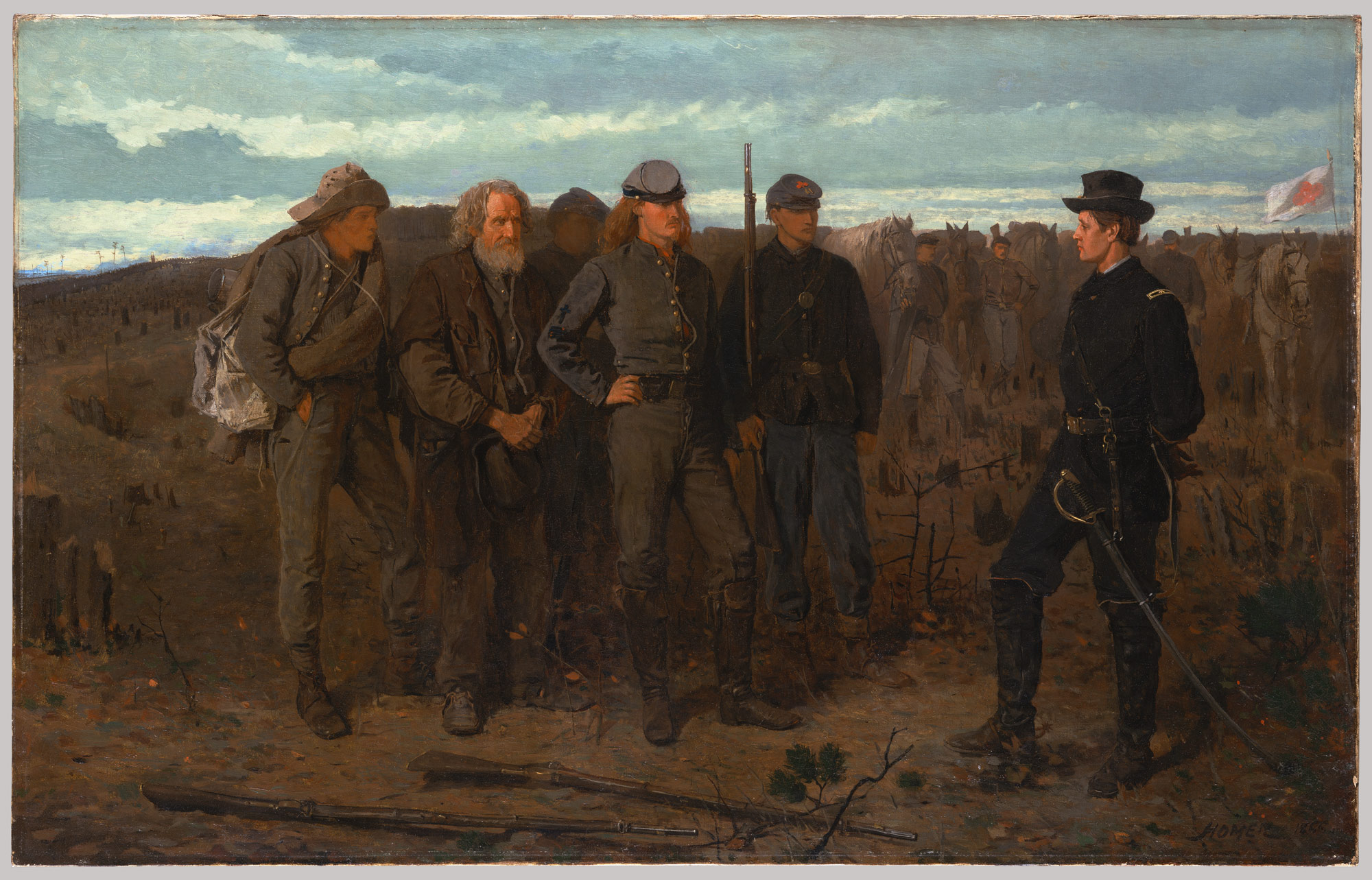
Life
- Winslow Homer was born in Boston, February 24, 1836. Homer’s mother was an amateur watercolorist and his first art teacher. They closely kept contacting throughout their lives.
- In 1855, Homer’s father arranged him for an apprenticeship to J. H. Bufford, a Boston commercial lithographer. Then, Homer wasted two years of his life in repetitively boring and useless typing business.
- In 1857, Homer began his freelance career. In 1859, he settled in New York.
- In 1861, Homer learned a little bit about oil painting by himself. In October, he was sent to Virginia, the front of the Civil War, as an editor and design chief for Harper’s Weekly. Because of this experience, Homer created a lot of war-related works, such as Prisoners from the Front, The Veteran in a New Field and Home, Sweet Home.

- In 1867, Homer travelled to Paris countryside where he then lived and worked for a year.
- From the late 1860s to the 1870s, Homer returned to New York and had a period for freely reflecting and aesthetically attempting. He worked as a painter and designing work for magazines and illustrations for these magazines. Homer mainly painted rural or idyllic scenes of farm life in this period

- Since the summer of 1873, in Gloucester, Massachusetts, Homer started to regularly paint with watercolours.
- Homer left the noisy social life in the late 1870s, even lived a while with only the keeper’s family in the secluded Eastern Point Lighthouse. In this time, he began to closely observe the sea view which became the main theme of his later creations.
- In 1881–1882, Winslow Homer travelled to England, lived in the coastal village of Cullercoats, Tyne and Wear. His works from this period are almost exclusively watercolours.

- In November 1882, Homer got back the US, critics mentioned the change of his style and the growth behind his works and. In the next year, He moved to Prouts Neck, Maine and then worked in his studio here until he died in 1910.
Style
Winslow Homer’s distinct life experiences dramatically divided the development of his artistic skill and understanding.
In the beginning, the frontline life first time evoked Homer deeply reflecting on life, society and nationalism. Because of this affection, in the next decade, he created a lot of works which caught people’s mind to let them consider the deeper meaning behind the paintings.

Then, Homer began to pursue a peaceful rural life that became his most works’ themes later. This period is the turning point of Homer’s artistic career because he began to intentionally exercise his skill in watercolour. No matter if the material cost is the true reason for him to switch drawing media, switching to watercolour largely influenced Homer’s technique and style.

By the long-term live and observation of the coastal village, Homer found his own balance point between nature and human beings. The characters in his works are illustrated to be more detailed in spirit level but not only outline shapes. Just like the Critics said, Homer’s women were no longer “dolls who flaunt their millinery”.

During Homer’s maturity, initially, his painting became more worthful to think about the relationships between humans and nature. Especially the sea painting, the characters always have a sense of facing challenges.

In his later life, however, Homer’s works got rid of the weary thinking about the nature of human beings. He turned to display more the cheerful side of peoples’ life and of the natural environment.

Personal Opinion
Winslow Homer is the same type of artist as current me, who pursue the relaxable creation and spiritual entertainment. Drawing anything interesting in life and enjoy this process of finding art. Thinking about the deeper nature behind the phenomenon or the appearance of stuff. Finally, show happiness in art. I like how he catches the most identifiable details of subjects and the progress of finding his own understanding of art. However, I cannot decide if I truly want to have his kind of life, because at least now I want to have a more diverse life and artistic creation.
References
https://en.wikipedia.org/wiki/Winslow_Homer https://www.metmuseum.org/toah/hd/homr/hd_homr.htm http://www.winslowhomer.org/ http://www.winslowhomer.org/biography.jsp https://baike.baidu.com/item/%E6%B8%A9%E6%96%AF%E6%B4%9B%C2%B7%E9%9C%8D%E9%BB%98/6361622?fr=aladdin